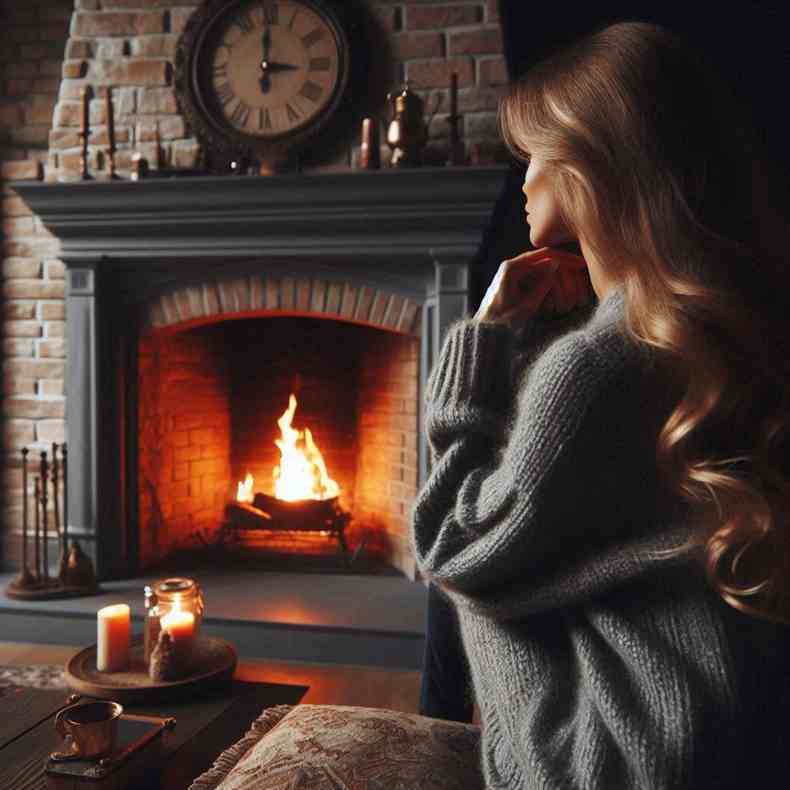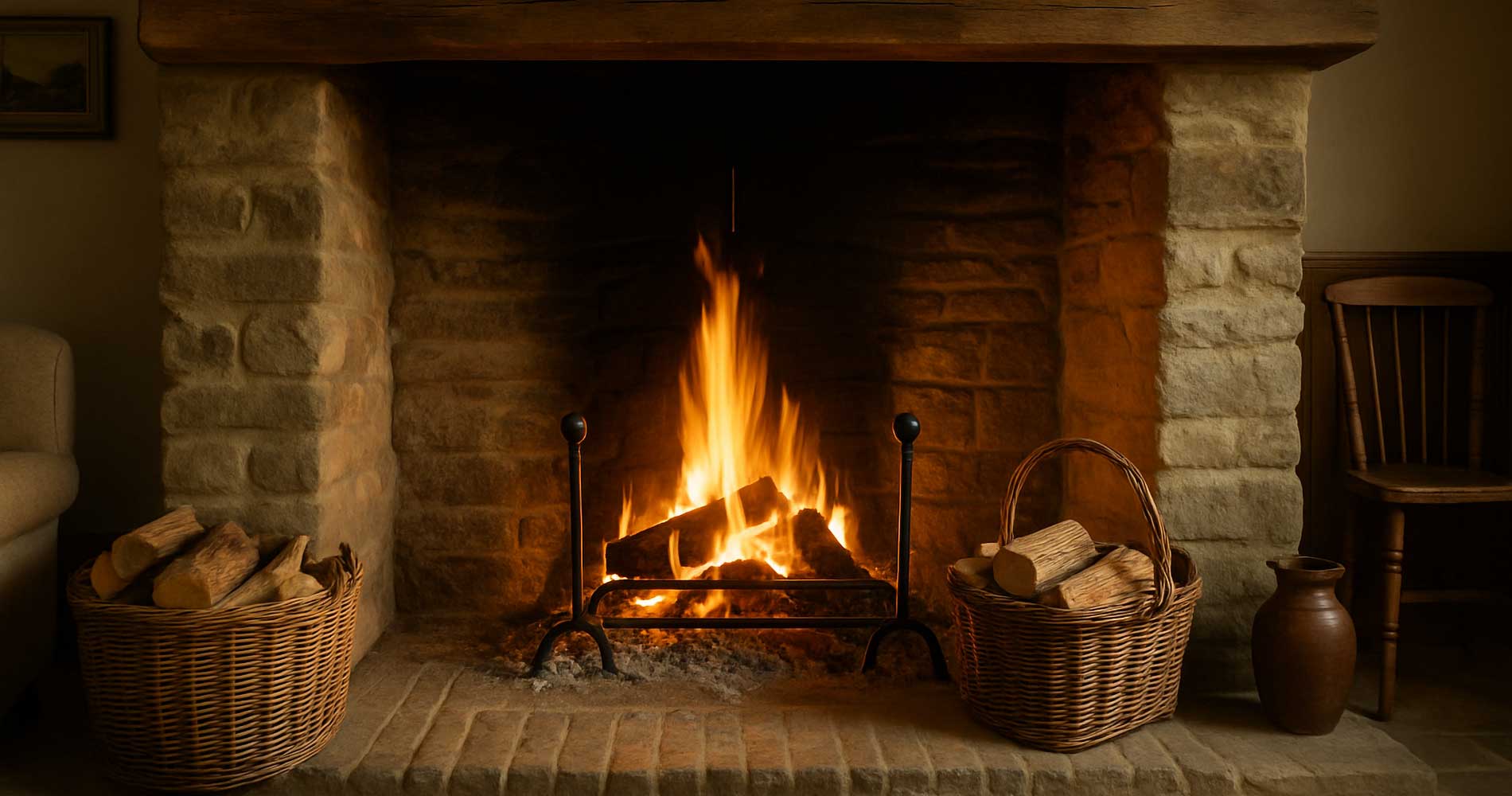Start the Season Warm, Safe and Stress-Free
That nip in the air? It’s your sign. Time to pull the jumpers out, switch the kettle on, and yes — get your fireplace sorted for the months ahead. Whether you’ve got a sleek modern insert or a rustic old hearth, winterising your fireplace isn't just about staying warm — it’s about keeping your home safe, efficient and welcoming when it matters most.
And let’s be honest: no one wants to discover mid-December that their chimney is full of soot or that the gas pilot won’t light. So before the frost really kicks in, here’s how to prepare your fireplace properly — and enjoy every crackle and glow with confidence.
1. Have Your Chimney or Flue Professionally Inspected
This one’s non-negotiable if you have a wood-burning or gas fireplace that vents through a flue or chimney. Over time, creosote builds up, birds nest, bricks crack — and none of that pairs well with an open flame.
- Book a certified chimney sweep — ideally someone HETAS-registered in the UK
- Ask for a full inspection, not just a quick sweep
- Ensure your flue is clear, structurally sound and compliant with safety regs
Even if you didn’t use the fireplace much last year, dust and damp can cause problems. Think of it as a pre-season MOT for your hearth.

2. Check the Fireplace Itself — Not Just the Chimney
It’s easy to assume the firebox and surround are fine. But a quick visual check can catch issues early.
- Look for cracks in bricks, fire cement or tiles
- Check the damper (if you have one) opens and closes smoothly
- Remove any cobwebs, debris or forgotten twigs
- If you use gas, inspect the pilot light and burner for dust or corrosion
Give everything a good wipe down — and maybe even a polish. The cleaner the firebox, the brighter the glow.
3. Stock Up on the Right Fuel
Not all wood is created equal. If you’re burning logs, make sure they’re properly seasoned — ideally with a moisture content below 20%. Burning damp wood doesn’t just make more smoke, it clogs your flue and adds to creosote buildup.
- Order your wood early to avoid winter rush and soggy stock
- Use a log store that’s raised off the ground and covered on top
- Consider kiln-dried wood for maximum efficiency
- Never burn treated, painted or green wood — it’s bad for you and your fireplace
Using a gas or electric fire? Check you’ve got the appropriate fuel canisters or power setup sorted now, not when it's freezing.
4. Clean the Surround and Hearth Area
Let’s be honest — the fireplace can gather a bit of dust in summer. Or possibly an entire Lego army. Before you start using it daily, give the area around your fireplace some love.
- Hoover or brush up any old ash, soot or spiderwebs
- Polish marble, stone or wood surrounds gently — use the right product for the material
- Clean the glass doors (if you have them) with a proper stove glass cleaner
- Make space for your log basket or fire tools
A clean hearth is not only safer — it's also the cosiest spot in the house when it’s all glowing and crackling.
5. Test Smoke and Carbon Monoxide Alarms
This might be the most vital step. Working alarms can save lives — especially when using solid fuel or gas fires in closed rooms.
- Test smoke alarms and replace batteries if needed
- Check your carbon monoxide detector — all fuel-burning fireplaces should have one nearby
- If your CO alarm is more than 7 years old, it might be time to replace it
If you don’t already have a CO detector in the room with your fireplace, make that your top priority today. You can’t smell or see carbon monoxide — and by the time you feel unwell, it’s often too late.
6. Review Your Fireplace Tools and Accessories
Fireplace gear gets tired too. Have a look at what you’ve got lying around and check it's still up to the job.
- Is your fireguard secure and intact?
- Do your tongs or poker still grip properly?
- Do you need a log carrier, ash bucket, or tool stand upgrade?
- Consider a heatproof rug if your floor is vulnerable to sparks
And maybe — just maybe — treat yourself to a fancy new match holder or basket. Life’s too short for boring hearth kits.
7. Make It Snug, Not Just Functional
Alright, now for the fun bit. Once the practical stuff is sorted, it's time to add the cosy factor. This isn’t just about temperature — it’s about comfort. About creating a little sanctuary where your shoulders finally drop.
- Layer in throws, cushions and maybe a chunky knit or two
- Add candles or fairy lights nearby for soft ambience
- Keep a reading chair, book pile or mug tray close at hand
In short — make it somewhere you actually want to spend your evenings. Because a fireplace is more than just a heat source. It's a pause button in a too-busy world.
Final Thoughts
Winterising your fireplace isn’t just a checklist. It’s a little ritual. A way of preparing your home — and maybe your heart — for the season ahead.
It means fewer surprises, more safety, and the peace of mind that when that first truly cold night hits, you’re ready. Ready to spark something warm. Something welcoming. Something that reminds you this cold season isn’t just about survival — it’s about comfort, connection, and creating a space where people feel held.
So take the time. Make it safe. And then… light it up.
